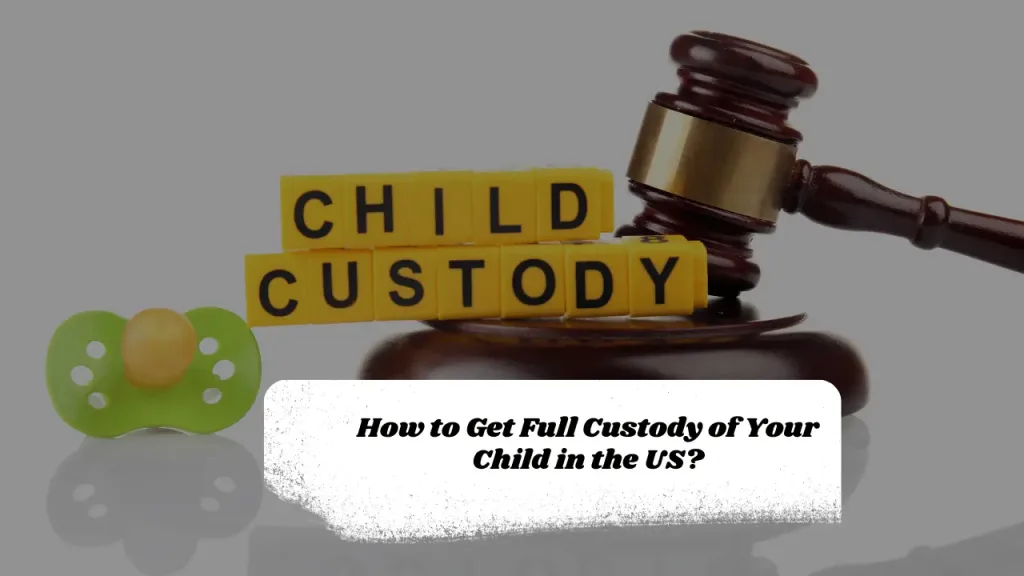How to Get Full Custody of Your Child in the US?
In the United States, obtaining full custody of a child involves a legal process that is centered around the best interests of the child. Here’s a concise guide on how to pursue full custody:
1. Understand Custody Types
- Legal Custody: The right to make decisions about the child’s upbringing (e.g., education, healthcare).
- Physical Custody: Where the child will live and how much time they will spend with each parent.
- Full Custody: Typically means primary physical custody and legal custody, although the other parent may retain visitation rights or some decision-making authority.
Table of Contents
2. Grounds for Full Custody
To be awarded full custody, you must prove it is in the child’s best interest. Common grounds include:
- Abuse or neglect by the other parent.
- Substance abuse or addiction issues with the other parent.
- Inability to provide a stable home or meet the child’s emotional and physical needs.
- Child’s preference, if they are old enough (usually over 12).
- Your ability to provide a stable, loving environment for the child.
3. Mediation
Many states require parents to try mediation before going to court. If mediation fails or is inappropriate (e.g., in cases of abuse), you can proceed to court.
4. Filing for Custody
To apply for full custody, you must file a custody petition with the family court. This petition will outline:
- Why full custody is in the child’s best interest.
- Any supporting evidence (e.g., abuse reports, school records, testimonies).
Related article: Which Parent Pays Child Support in Joint Custody?

5. Court Evaluation
The court will evaluate:
- The child’s physical and emotional needs.
- The parent’s ability to provide for those needs.
- The child’s relationship with each parent.
- Any history of abuse, neglect, or violence.
In some cases, a Guardian ad Litem (GAL) may be appointed to represent the child’s interests.
6. Court Hearing
Both parents present evidence and may testify in a hearing. The judge will focus on what is in the child’s best interests, including safety and stability.
7. Decision
The judge will issue a ruling based on the evidence. If full custody is awarded, the custodial parent assumes primary responsibility for the child’s care, although the non-custodial parent may still be granted visitation rights.
8. Appeals
If you disagree with the court’s decision, you can appeal, but it must be based on legal grounds, such as an error in the ruling.
9. Modifications
If circumstances change (e.g., the other parent becomes unfit), you can request a modification of the custody order by filing a motion with the court.
In any custody case, seeking legal advice from a family law attorney is recommended to ensure the best outcome for both you and your child.
About the Author

Sarah Klein, JD, is a former family law attorney with over a decade of courtroom and mediation experience. She has represented clients in divorce, custody cases, adoption, Alimony, and domestic violence cases across multiple U.S. jurisdictions.
At All About Lawyer, Sarah now uses her deep legal background to create easy-to-understand guides that help families navigate the legal system with clarity and confidence.
Every article is based on her real-world legal experience and reviewed to reflect current laws.
Read more about Sarah
